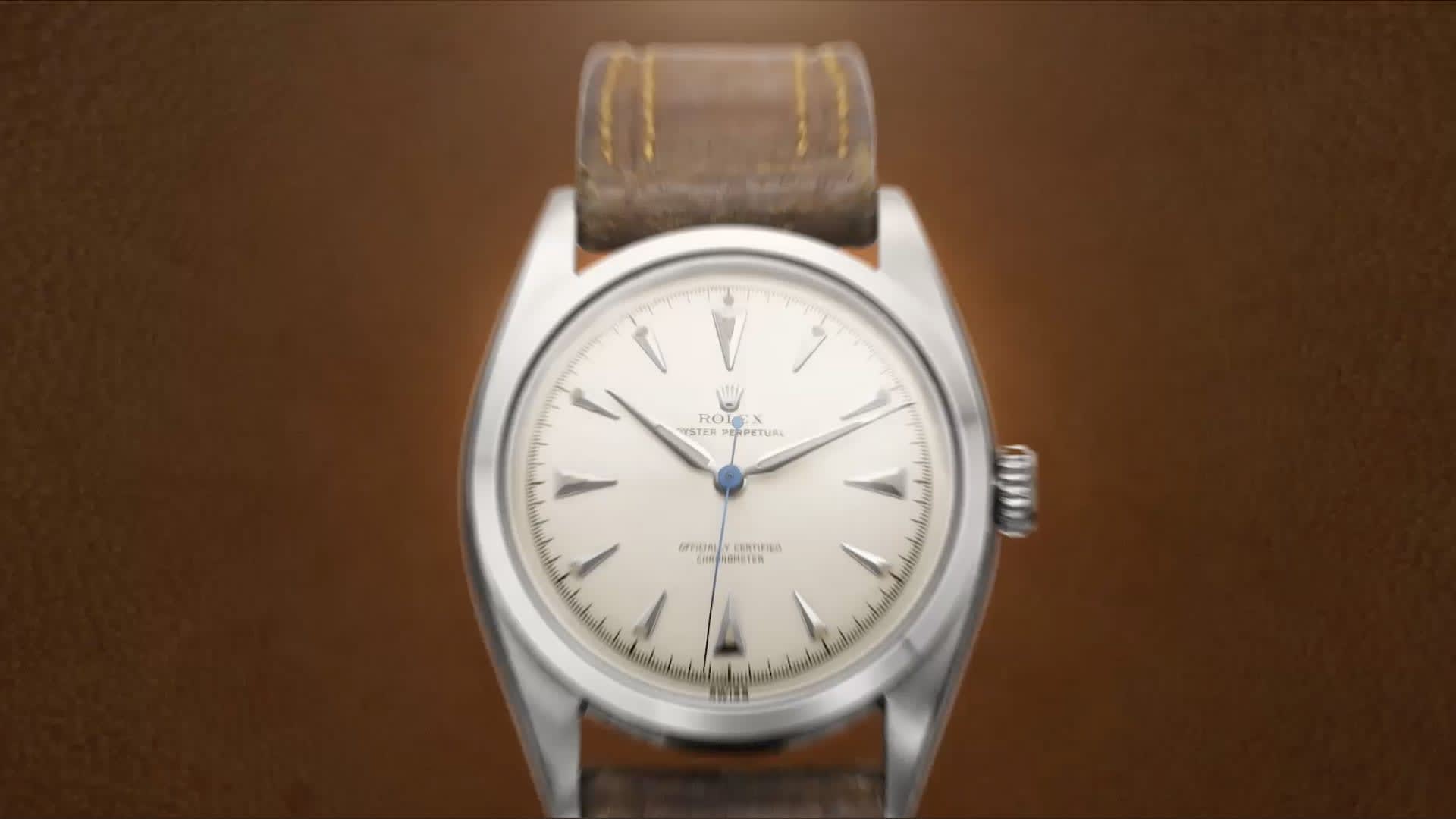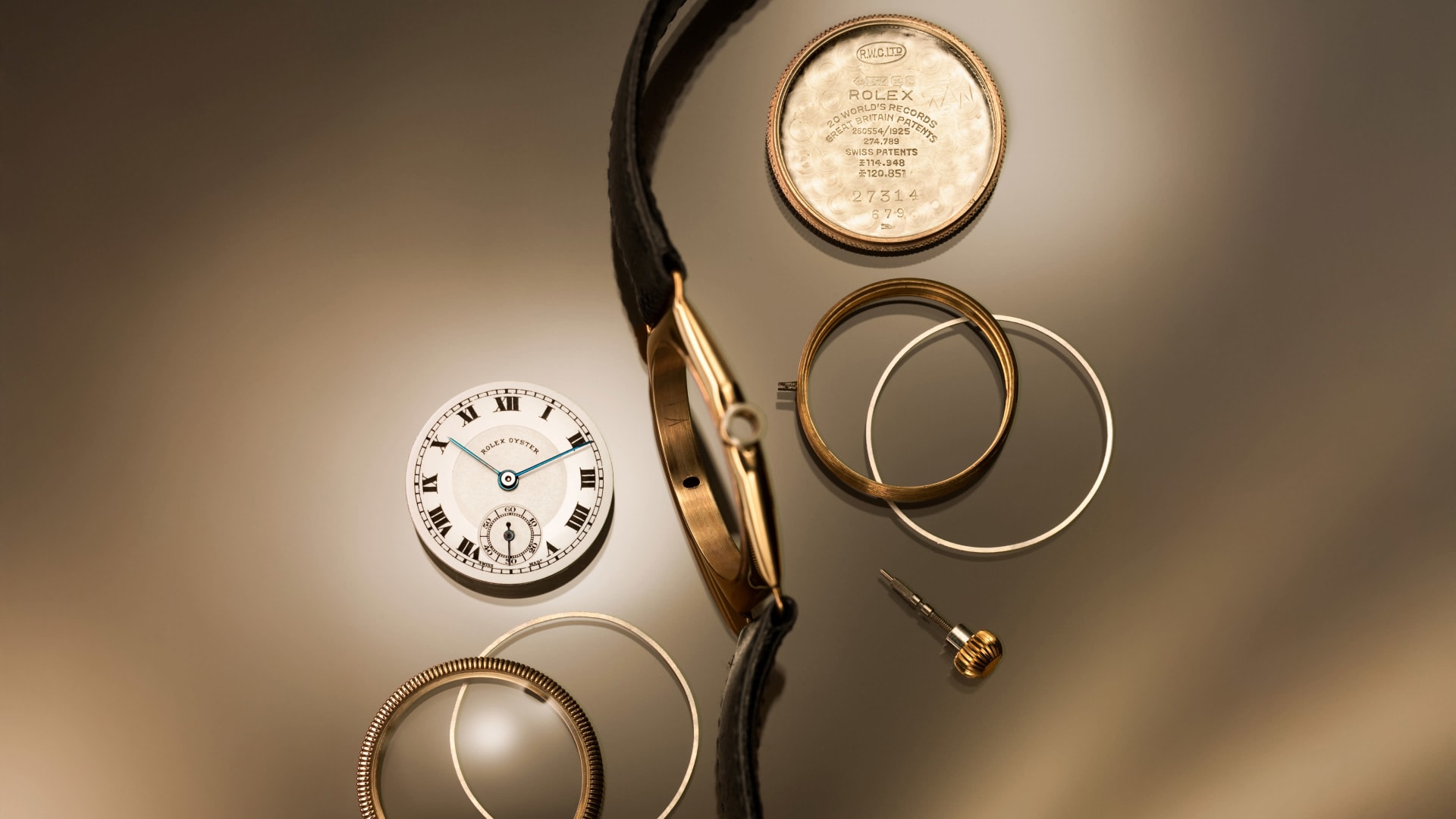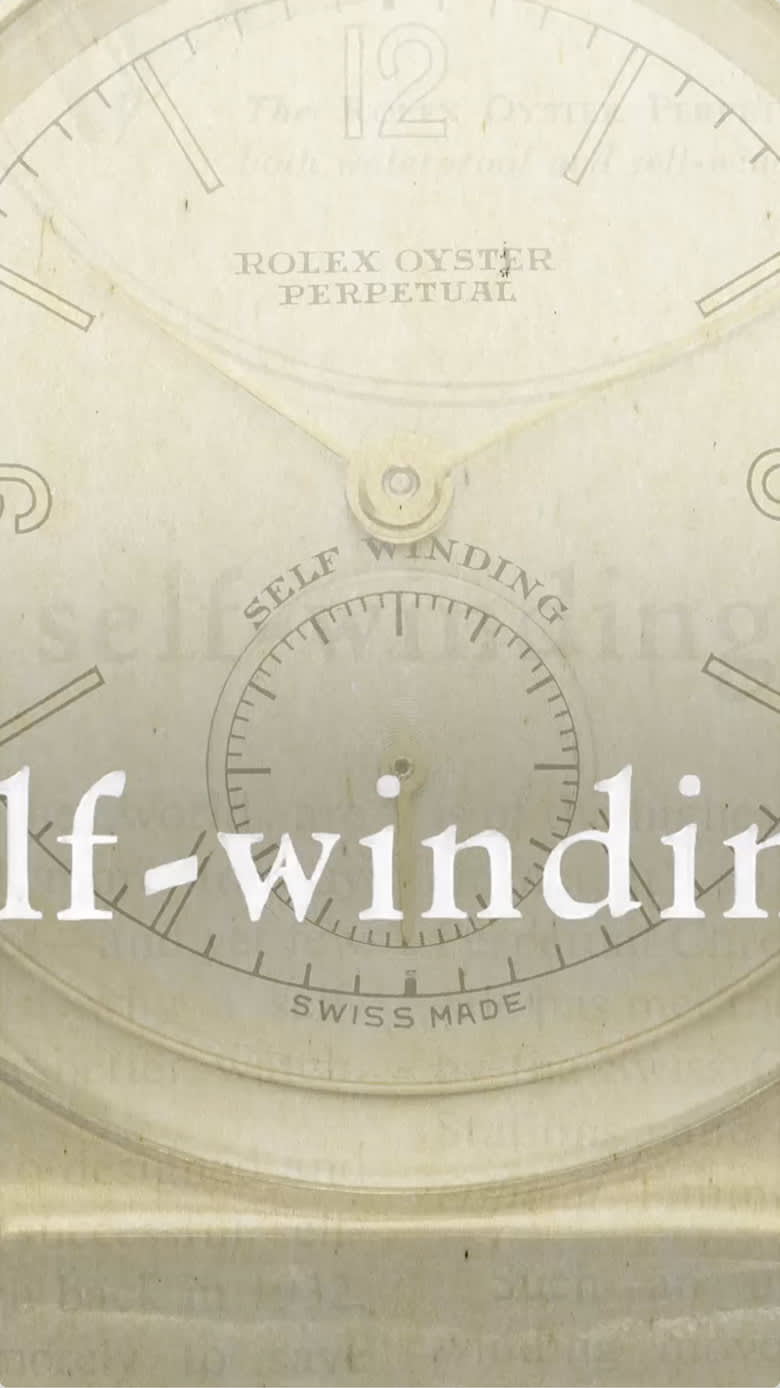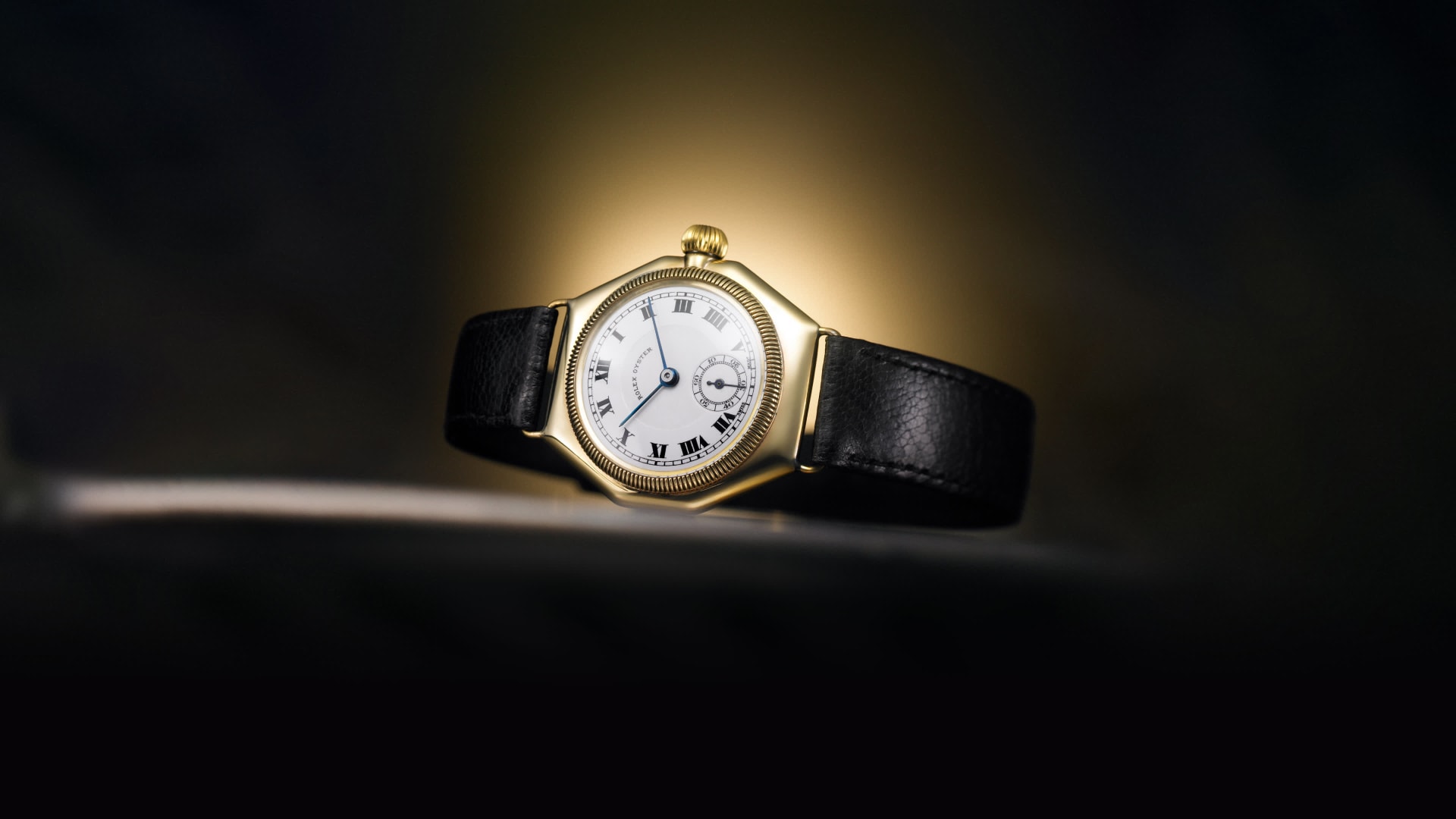
The challenges of a visionary
Bringing together three of Rolex’s major watchmaking accomplishments, the Oyster Perpetual embodies the pioneering spirit of the brand’s founder Hans Wilsdorf. From the 1930s, the chronometric precision, waterproofness and self-winding mechanism made this watch the reference that would give rise to the entire Oyster Perpetual range.
I was convinced that my life’s success revolved around precision.

Persistence in precision
Chronometric precision was the first challenge. At the beginning of the 20th century, many doubted that a wristwatch could remain truly precise. Hans Wilsdorf, however, was convinced otherwise. In 1910, in Bienne, a Rolex watch was the first wristwatch in the world to receive the Swiss Certificate of Chronometric Precision. Then, in 1914, the founder of Rolex surprised the watchmaking world by obtaining certification from the Kew Observatory in England. For the first time, a watch worn on the wrist received the same certification as large marine chronometers, the most precise timepieces at the time. Hans Wilsdorf’s intuition proved to be correct.

The Oyster is the most important invention regarding watches of recent years.

Proven waterproofness
In 1927, with Mercedes Gleitze, a new chapter was written in Rolex’s history. One year after creating the Oyster, Hans Wilsdorf equipped the young Englishwoman with the timepiece for her swim across the English Channel. After more than 10 hours in the freezing water, the watch emerged in perfect working order. Since then, Rolex has continued to view the world as a living laboratory, entrusting its watches to athletes, explorers, pilots, sailors and world travellers that bear witness to their performance in the field, including in the most extreme conditions. It is the embodiment of Hans Wilsdorf’s philosophy to prove his ideas by testing them, endorsing the quality of Rolex watches around the world.
Embracing the movement of the body.


Adapting to each rhythm
As of 1931, after several years of research and development, Rolex registered a series of patents on a self-winding mechanism with a free rotor called the Perpetual rotor. This major innovation made it possible to avoid having to remember to manually wind your watch and greatly limited the need to manipulate the winding crown. Thanks to this system, equipped with an oscillating weight that rotates whenever the wearer moves their wrist, the watch winds itself as it’s being worn. This concept would later become the standard adopted by the entire watchmaking industry. Adapting to the rhythm of each wearer, accompanying them throughout their daily activities, the Oyster Perpetual stays in tune with all of life’s movements.
